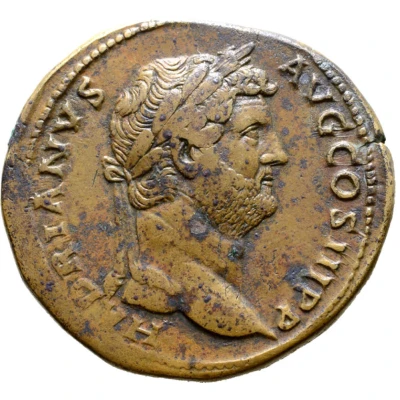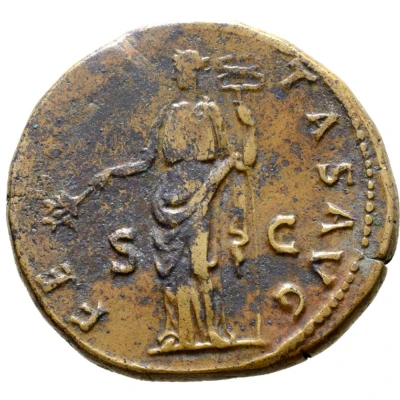Sestertius - Hadrian FELICITAS AVG S C; Felicitas
136 year| Orichalcum | 25 g | 32.5 mm |
| Issuer | Rome › Roman Empire (27 BC - 395 AD) |
|---|---|
| Emperor | Hadrian (Publius Aelius Hadrianus) (117-138) |
| Type | Standard circulation coin |
| Year | 136 |
| Value | 1 Sestertius = ¼ Denarius |
| Currency | Denarius, Reform of Augustus (27 BC – AD 215) |
| Composition | Orichalcum |
| Weight | 25 g |
| Diameter | 32.5 mm |
| Shape | Round (irregular) |
| Technique | Hammered |
| Demonetized | Yes |
| Updated | 2024-10-06 |
| Numista | N#256715 |
|---|---|
| Rarity index | 100% |
Reverse
Felicitas standing left, holding branch and long caduceus.
Script: Latin
Lettering:
FELICITAS AVG
S C
Translation:
Felicitas Augusti. Senatus Consultum.
The good fortune of the emperor (Augustus). Decree of the senate.
Comment
Source: Online Coins of the Roman Empire (OCRE)Interesting fact
The Sestertius coin featuring Hadrian and the goddess Felicitas is an interesting artifact from ancient Rome. One fascinating fact about this coin is that it was made of Orichalcum, a metal that was highly valued in ancient times and believed to have magical properties. Orichalcum was a bronze-like alloy composed of copper, zinc, and sometimes small amounts of gold or silver. It was prized for its durability and resistance to corrosion, making it an ideal material for coins that were meant to circulate widely and be used in everyday transactions. The use of Orichalcum in the production of coins during Hadrian's reign (117-138 AD) reflects the advanced metallurgical knowledge and technological capabilities of the Roman Empire during that time.

